Related Research Articles

Carol Ann Shields was an American-born Canadian novelist and short story writer. She is best known for her 1993 novel The Stone Diaries, which won the U.S. Pulitzer Prize for Fiction as well as the Governor General's Award in Canada.
Canadian literature is written in several languages including English, French, and to some degree various Indigenous languages. It is often divided into French- and English-language literatures, which are rooted in the literary traditions of France and Britain, respectively. The earliest Canadian narratives were of travel and exploration.
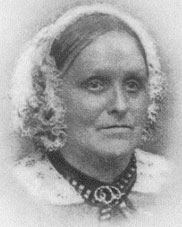
Susanna Moodie was an English-born Canadian author who wrote about her experiences as a settler in Canada, which was a British colony at the time.
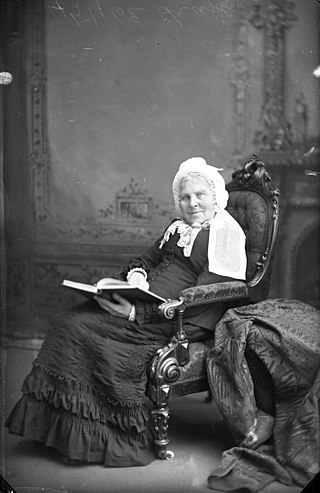
Catharine Parr Traill was an English-Canadian author and naturalist who wrote about life in Canada, particularly what is now Ontario. In the 1830s, Canada covered an area considerably smaller than today. At the time, most of Upper Canada had not been explored by European settlers.

Douro-Dummer is a township in central-eastern Ontario, Canada, in Peterborough County along the Trent-Severn Waterway. It was formed on January 1, 1998, through the amalgamation of Douro and Dummer Townships.

Agnes Strickland was an English historical writer and poet. She is particularly remembered for her Lives of the Queens of England.

Alias Grace is a historical fiction novel by Canadian writer Margaret Atwood. First published in 1996 by McClelland & Stewart, it won the Canadian Giller Prize and was shortlisted for the Booker Prize.
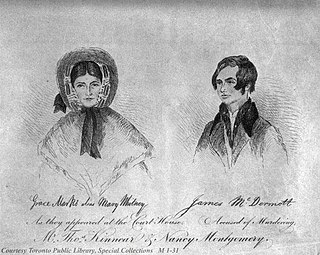
Grace Marks was an Irish-Canadian maid who was involved in the 1843 murder of her employer Thomas Kinnear and his housekeeper, Nancy Montgomery, in Richmond Hill, Ontario. Her conviction for the murder of Kinnear was controversial and sparked much debate about whether Marks was actually instrumental in the murder or merely an unwitting accessory. Marks was the subject of Margaret Atwood's historical fiction novel Alias Grace and its adaptations in other media.

Carrie's War is a 1973 English children's novel by Nina Bawden set during the Second World War. It follows two young London evacuees, Carrie and her younger brother Nick, into a Welsh village. It is often read in schools for its literary and historical interest. Carrie's War received the 1993 Phoenix Award and has been adapted for television.

Canadian Crusoes: A Tale of the Rice Lake Plains is a novel by Catharine Parr Traill published in 1852, considered the first Canadian novel for children. Written after The Backwoods of Canada (1836), it is Traill's second Canadian book. It was first published in 1852 by London publisher Arthur Hall, Virtue, and Company. It was edited by her sister Agnes Strickland.
Charlotte Gray, CM is a British-born Canadian historian and author. The Winnipeg Free Press has called her "one of Canada's best loved writers of popular history and literary biography."

Katchewanooka Lake is one of the Kawartha lakes in south-central Ontario, Canada. It is about 5 miles (8.0 km) long and .5 miles (0.80 km) wide. The Trent Severn Waterway flows through Lake Katchewanooka into the Otonabee River at its outlet just north of Lakefield, continuing southwest through Little Lake in Peterborough and on into Rice Lake. Lakefield College School lies on the east side of the lake.
Willow Dawson, originally from Vancouver, British Columbia, is an illustrator and writer working out of Toronto, Canada. Her stand-alone illustrations are rendered in ink and acrylic on cardboard. She also works sequentially in ink as a comics artist. Some of Dawson’s clients include Kids Can Press, Owl Magazine, Shameless Magazine, Feathertale Review, Filmblanc, Sumach Press, Kiss Machine, Locust Mount Records, Tightrope Books and Omni TV.
Claudia Casper is a Canadian writer. She is best known for her bestseller novel The Reconstruction, about a woman who constructs a life-sized model of the hominid Lucy for a museum diorama while trying to recreate herself. Her third novel, The Mercy Journals, written as the journals of a soldier suffering PTSD in the year 2047, won the 2016 Philip K. Dick Award for distinguished Science fiction.
Roughing It in the Bush is an account of life as a Canadian settler by Susanna Moodie. Moodie immigrated to Upper Canada, near modern-day Peterborough, Ontario during the 1830s. At the suggestion of her editor, she wrote a "guide" to settler life for British subjects considering coming to Canada. Roughing It in the Bush was first published in London in 1852. It was Moodie's most successful literary work. The work is part memoir, part novelization of her experiences, and is structured as a chronological series of sketches.
Louisa Annie Murray was an English-born Canadian writer.
Clara Thomas was a Canadian academic. A longtime professor of English at York University, she was one of the first academics to devote her work specifically to the study of Canadian literature, and was especially known for her studies of Canadian women writers such as Anna Brownell Jameson, Susanna Moodie, Catharine Parr Traill, Isabella Valancy Crawford and Margaret Laurence.

Agnes Dunbar Fitzgibbon Chamberlin was a Canadian artist living in Ontario.
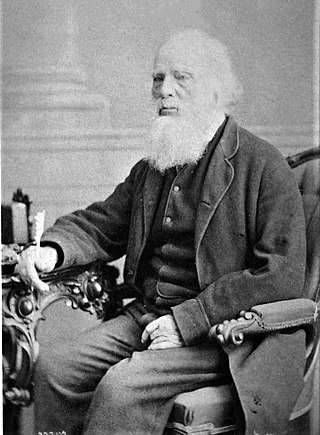
John Wedderburn Dunbar Moodie was a Scottish-born army officer, farmer, civil servant and writer in early Canada.
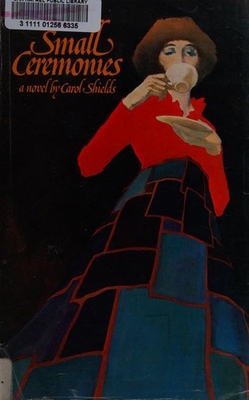
Small Ceremonies is a 1976 novel by American-Canadian writer Carol Shields. The novel centres on Judith Gill, a university academic who is writing a biography of Susanna Moodie, depicting a year in the life of her family.
References
- ↑ Hansen, Kathryn Strong (2012). "In Defense of Graphic Novels". The English Journal. 102 (2): 61. ISSN 0013-8274. JSTOR 23365398.
- ↑ ""Best Books for Kids and Teens"". Canadian Children Book Center. Fall 2016. Retrieved 2022-11-22.
- ↑ Hollenberg, Donna Krolik; Shields, Carol (1998). "An Interview with Carol Shields". Contemporary Literature. 39 (3): 340. doi:10.2307/1208862. ISSN 0010-7484. JSTOR 1208862.
- ↑ "Carol Shields | The Canadian Encyclopedia". www.thecanadianencyclopedia.ca. Retrieved 2022-11-22.
- ↑ Stropes, Erin (2017-04-07). "How Patrick Crowe wrote a graphic novel about Susanna Moodie with Carol Shields". the Canadian Broadcasting Corporation. Retrieved 2022-11-22.
- ↑ "Pop Sandbox Productions". www.popsandbox.com. Retrieved 2022-11-22.
- ↑ "Funded Projects". Canada Media Fund. Retrieved 2022-11-22.
- ↑ "CM Magazine: Susanna Moodie: Roughing It in the Bush". www.cmreviews.ca. Retrieved 2022-11-22.
- ↑ Strong-Boag, Veronica (Spring 2017). "SUSANNA MOODIE: Roughing It in the Bush". Herizons . 30 (4): 37–38.